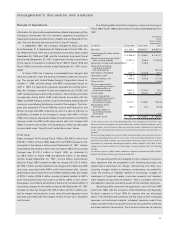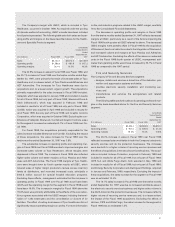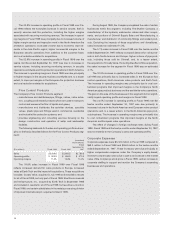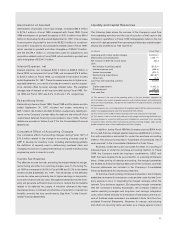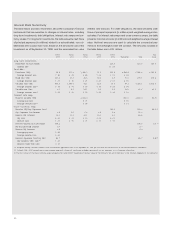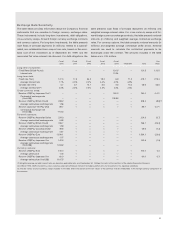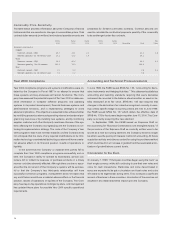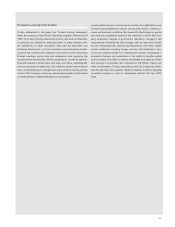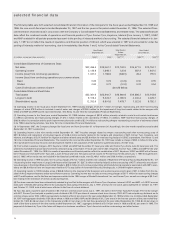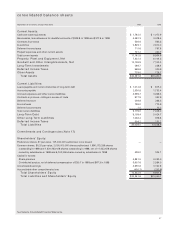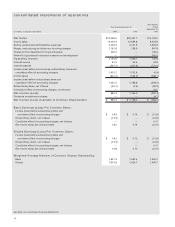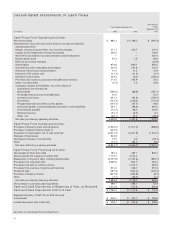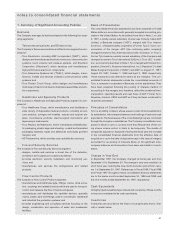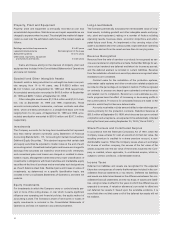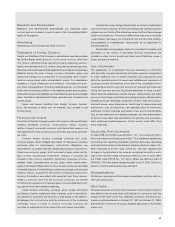ADT 1999 Annual Report Download - page 37
Download and view the complete annual report
Please find page 37 of the 1999 ADT annual report below. You can navigate through the pages in the report by either clicking on the pages listed below, or by using the keyword search tool below to find specific information within the annual report.
35
Forward Looking Information
Certain statements in this report are “forward looking statements”
within the meaning of the Private Securities Litigation Reform Act of
1995. All forward looking statements involve risks and uncertainties.
In particular, any statement contained herein, in press releases, writ-
ten statements or other documents filed with the Securities and
Exchange Commission, or in the Company’s communications and dis-
cussions with investors and analysts in the normal course of business
through meetings, phone calls and conference calls, regarding the
consummation and benefits of future acquisitions, as well as expecta-
tions with respect to future sales, earnings, cash flows, operating effi-
ciencies and product expansion, are subject to known and unknown
risks, uncertainties and contingencies, many of which are beyond the
control of the Company, which may cause actual results, performance
or achievements to differ materially from anticipated
results, performances or achievements. Factors that might affect such
forward looking statements include, among other things, overall eco-
nomic and business conditions; the demand for the Company’s goods
and services; competitive factors in the industries in which the Com-
pany competes; changes in government regulation; changes in tax
requirements (including tax rate changes, new tax laws and revised
tax law interpretations); interest rate fluctuations and other capital
market conditions, including foreign currency rate fluctuations; eco-
nomic and political conditions in international markets, including gov-
ernmental changes and restrictions on the ability to transfer capital
across borders; the ability to achieve anticipated synergies and other
cost savings in connection with acquisitions; the timing, impact and
other uncertainties of future acquisitions; and the Company’s ability
and its customers’ and suppliers’ ability to replace, modify or upgrade
computer programs in order to adequately address the Year 2000
issue.


